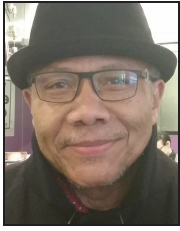
Mayor Rahm Emanuel may not care for the title of Spike Lee’s movie slated to start shooting this summer in Englewood, but as an artist, an out-of-towner and a show businessman, “Chiraq” makes perfectly good sense for America’s most iconic Black director.
Popularized by Chief Keef and other neo-gangster rappers in Chicago’s drill music set, the term Chiraq chronicles the violence in some of the city’s worst poverty pockets. Creating the phrase was a low-brainer, considering that when it comes to body count in Chitown’s most dangerous hoods — Fuller Park, Garfield Park and Englewood — more Blacks have been shot and killed on a year-to-year basis there than in war-torn Iraq.
Beyond that, Spike could certainly use a drive-by box office hit. In nearly a decade, the “Black Woody Allen” hasn’t able to do enough of the right thing to produce a feature film as relevant as director Ava Duvernay’s Selma or as entertaining as director Quentin Tarantino’s Django Unchained. A convincing argument could be made that in the past 20 years, the New York–based director has made only one smack down feature film, the 2006 The Inside Man, that can hold its own against his earlier efforts like She’s Got to Have It and Malcolm X.
While he made some memorable documentaries over the years, including 4 Little Girls, and the TV mini-series, When the Levees Broke, Lee’s feature-film efforts, such as Miracle of Saint Anna, Red Hook Summer and Oldboy, had more fizzle than sizzle.
A modern day Menace II Society might do the trick in reviving Lee’s career, but I seriously doubt if Chiraq will do the trick partly because it’s based on a misleading premise.
Contrary to what gets reported on the nightly news or in screaming newspaper headlines, Chicago’s murder rate is on the decline. It’s the lowest it has been in more than four decades. According to rankings made by NeighborhoodScout.com, a website that markets itself as providing “Enterprise-grade data for every neighborhood and city in the U.S,” the Windy City isn’t even on its list of America’s Top 30 murder capitals. Downstate East St. Louis is number one. Two suburbs across state lines, Gary is number three and East Chicago ranks number 15.
In making another stab at recapturing the ‘90s when his films shocked and awed viewers, Spike may be bringing too little, too late to the reality of Chicago’s Bronzeville, which is already showing signs of turning into D.C. or Harlem. No longer the Chocolate City, because of gentrification and incoming white flight, the Black population in the District of Columbia has slipped below 50 percent. Nor are Blacks the majority in Harlem anymore.
You can see it unfolding before your very eyes in Bronzeville. The hipsters are salting the South Side. They can be spotted walking their dogs, jogging or pushing their baby strollers on streets their parents and grandparents had either avoided or had forgotten.
You can trace it back to Mayor Richard M. Daley and his not so grand plan to transform Chicago into Paris — a world class city. It was obvious with the flowers and the fences and the fancy hand operated sidewalk vacuums. It was clandestine with the razing of Cabrini Green and Robert Taylor Homes, which diluted the power of the city’s Black voting bloc and exiled the poor to, among other places, Gary, East Chicago and Harvey.
You can see why Chiraq is not the best title for what’s really happening here. So, I’ve got a better suggestion. I think Spike should look at the artwork of visual artist James Pate and either beg, borrow or buy his cutting edge artistic vision. A couple of years ago, Pate had a three-month exhibition at the DuSable Museum. Its title was KKK–Kin Killin Kin.
The detailed black and white drawings, beautiful yet powerful, were of boys from the hood, wearing Ku Klux Klan-like headgear with their black faces exposed or basketball jerseys with the initials KKK on them while pointing guns at each other’s heads. The bullets they fired were artistically frozen just before they entered each other’s heads.
That unnerving reality would make a much more powerful movie than a sequel to the Hughes brothers 1993 hit.
If Spike doesn’t want to pursue the KKK metaphor, he can always change his filming location. Killadelphia won’t do because, like Chicago, the City of Brotherly Love’s murder rate is down. But Baltimore might work. It has killer cops and urban uprisings right now and, unfortunately, a high enough murder rate: Charm City ranks #13 on the Top Murder Capitols list.
Baltimore, courtesy of The Wire, has a controversial colloquialism just as good as Chiraq. That would be Bodymore, Murdaland.
